
Kadriorg: The Cultural and Historical Gem of Tallinn
Discover Kadriorg in Tallinn, Estonia - a blend of royal history, lush parks, and rich cultural heritage, perfect for art lovers and nature enthusiasts alike.
Kadriorg, a picturesque neighbourhood in Tallinn, Estonia, is a harmonious blend of history, culture, and natural beauty. Named after Catherine I of Russia, this area is famed for its baroque Kadriorg Palace, which was commissioned by Peter the Great in the early 18th century. The palace, now home to the Kadriorg Art Museum, offers a glimpse into royal life and houses an impressive collection of European and Russian art. Stroll through Kadriorg Park, a sprawling green space that surrounds the palace. This park is perfect for leisurely walks, picnics, and enjoying the serene beauty of well-maintained gardens, ponds, and fountains. In the summer, the park comes alive with blooming flowers and vibrant greenery, while in the winter, it transforms into a snowy wonderland. Kadriorg is also home to several other notable attractions, including the Kumu Art Museum, one of the largest art museums in the Baltics. This modern architectural marvel showcases Estonian art from the 18th century to contemporary works. Nearby, you'll find the Mikkel Museum, which displays an array of Western European and Russian art. The neighbourhood’s charming streets are lined with colourful wooden houses, cozy cafes, and boutique shops. Don’t miss the chance to sample local Estonian cuisine at one of the many inviting eateries. Kadriorg is not just about history and art; it’s also a vibrant community where you can experience the local way of life.
Local tips in Kadriorg
- Visit early in the morning to enjoy the tranquility of Kadriorg Park before it gets crowded.
- Wear comfortable shoes as the neighbourhood is best explored on foot.
- Check the schedule for temporary exhibitions at the Kumu Art Museum.
- Take a picnic to enjoy in the park, especially during the summer months.
- Use public transport or rent a bike to explore Kadriorg and its surroundings.
Kadriorg: The Cultural and Historical Gem of Tallinn
Kadriorg, a picturesque neighbourhood in Tallinn, Estonia, is a harmonious blend of history, culture, and natural beauty. Named after Catherine I of Russia, this area is famed for its baroque Kadriorg Palace, which was commissioned by Peter the Great in the early 18th century. The palace, now home to the Kadriorg Art Museum, offers a glimpse into royal life and houses an impressive collection of European and Russian art. Stroll through Kadriorg Park, a sprawling green space that surrounds the palace. This park is perfect for leisurely walks, picnics, and enjoying the serene beauty of well-maintained gardens, ponds, and fountains. In the summer, the park comes alive with blooming flowers and vibrant greenery, while in the winter, it transforms into a snowy wonderland. Kadriorg is also home to several other notable attractions, including the Kumu Art Museum, one of the largest art museums in the Baltics. This modern architectural marvel showcases Estonian art from the 18th century to contemporary works. Nearby, you'll find the Mikkel Museum, which displays an array of Western European and Russian art. The neighbourhood’s charming streets are lined with colourful wooden houses, cozy cafes, and boutique shops. Don’t miss the chance to sample local Estonian cuisine at one of the many inviting eateries. Kadriorg is not just about history and art; it’s also a vibrant community where you can experience the local way of life.
Iconic landmarks you can’t miss
Kadriorg Park
Explore the beauty of Kadriorg Park in Tallinn, a perfect blend of nature, history, and art in a serene and picturesque setting.

Kadriorg Art Museum
Discover the enchanting Kadriorg Art Museum in Tallinn, a heritage site showcasing European masterpieces and Estonian art in a stunning Baroque setting.

Eesti Kunstimuuseum
Explore the rich artistic heritage of Estonia at the Eesti Kunstimuuseum, a cultural gem in Tallinn showcasing diverse art collections and exhibitions.

Rusalka Memorial
Discover the beauty and history of the Rusalka Memorial in Tallinn's Kadriorg Park, an iconic tribute to sailors lost at sea, surrounded by lush gardens.

Maarjamäe Castle
Explore the enchanting Maarjamäe Castle in Tallinn, where history meets beauty in a stunning setting surrounded by lush landscapes.
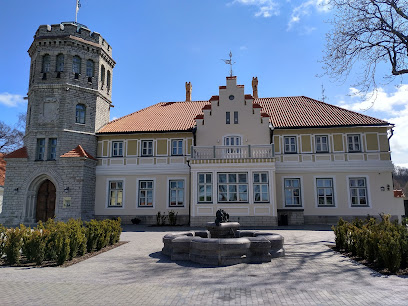
Kadriorg sundial
Explore Kadriorg Sundial in Tallinn, a captivating blend of art and nature nestled within the stunning Kadriorg Park, perfect for peaceful reflection.

Gustav Ernesaks Memorial
Discover the Gustav Ernesaks Memorial in Tallinn, a serene tribute to Estonia's musical heritage surrounded by tranquil gardens and rich history.

F. R. Kreutzwaldi monument
Discover the F. R. Kreutzwaldi Monument in Tallinn, a historical landmark celebrating Estonia's literary heritage and cultural identity.

Kadrioru Ringkanal
Discover the tranquil beauty of Kadrioru Ringkanal in Tallinn, a perfect blend of nature and culture for an unforgettable experience.

Kadrioru paistiik
Explore the tranquil beauty of Kadrioru Paistiik, a picturesque park in Tallinn perfect for leisurely strolls and peaceful picnics.

Unmissable attractions to see
Eesti Kunstimuuseum
Explore the Eesti Kunstimuuseum in Tallinn, a vibrant art museum showcasing the beauty of Estonian and international art in a stunning modern setting.

Kadriorg sundial
Experience the captivating blend of art and nature at Kadriorg Sundial in Tallinn's historic Kadriorg Park, a serene oasis for every traveler.
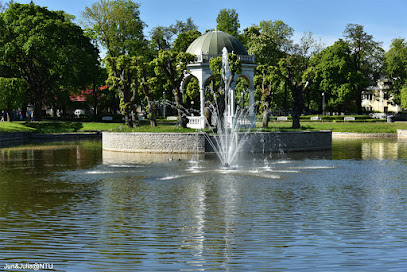
People's Park
Explore the lush landscapes and serene pathways of People's Park, Tallinn's urban oasis that offers a peaceful retreat in the heart of the city.

Kadrioru paistiik
Explore the stunning landscapes and rich history of Kadrioru Park, a serene oasis in Tallinn perfect for leisurely strolls and cultural experiences.

Luigetiigi pavilion
Experience tranquility at Luigetiigi Pavilion in Tallinn, where nature meets architectural beauty for a perfect escape from urban life.

Eesti Vabariigi Presidendi Kantselei mesitarud
Experience the unique beehives at the Eesti Vabariigi Presidendi Kantselei in Tallinn, a blend of sustainability and cultural heritage.
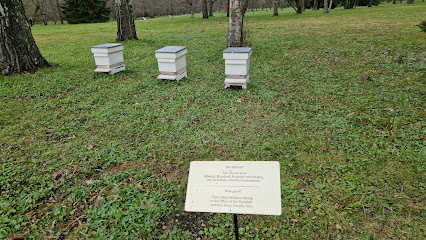
Noortepargi kivi
Explore the historical essence of Tallinn at Noortepargi Kivi, a remarkable tourist attraction that embodies Estonia's rich culture and vibrant city life.
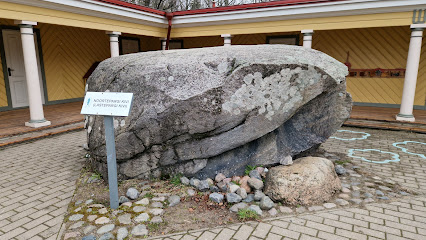
Tallinna laululava
Discover the cultural heart of Estonia at the Tallinn Song Festival Grounds, a vibrant venue for music and celebration in the beautiful city of Tallinn.

Essential places to dine
NOP Cafe and Shop
Discover NOP Cafe and Shop: A delightful blend of fresh local cuisine and charming ambiance in the heart of Tallinn.

Tuljak
Discover exquisite Estonian cuisine at Tuljak - where modern flavors meet stunning views in Tallinn.

Cantina Carramba
Experience authentic Mexican cuisine at Cantina Carramba in Tallinn; where every dish tells a flavorful story.

Mon Repos
Discover the elegance of fine dining at Mon Repos in Tallinn - where exquisite flavors meet exceptional service.

7Ürti Resto
Experience authentic Estonian cuisine at 7Ürti Resto in Tallinn - where tradition meets modern culinary art.

BACIO Restoran & Kohvik
Discover the essence of Italy at BACIO Restoran & Kohvik in Tallinn - where authentic flavors meet cozy ambiance.

Restaurant Mantel & Korsten
Discover the exquisite flavors of Estonia at Restaurant Mantel & Korsten in Kesklinn – where culinary artistry meets warm hospitality.

Taverna del Gallo Nero
Experience authentic Italian cuisine at Taverna del Gallo Nero in Tallinn, where every dish brings the flavors of Italy to your table.

Faeton Restaurant
Discover healthy and delicious dining at Faeton Restaurant in Tallinn - where flavor meets wellness in every dish.
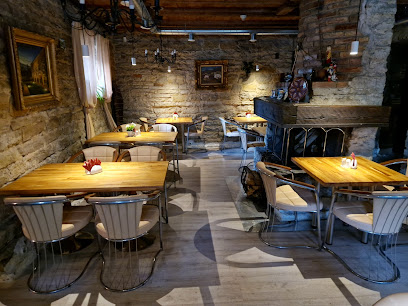
La Pineta Restoran
Discover authentic Italian cuisine at La Pineta Restoran in Tallinn—where every dish is crafted with passion and tradition.

Markets, malls and hidden boutiques
Kadrioru Selver ABC
Discover local flavors and international products at Kadrioru Selver ABC, a premier grocery store in Tallinn offering a delightful shopping experience.

Anix Tallinn
Explore Anix Tallinn for an authentic shopping experience filled with local goods and unique souvenirs in the heart of Estonia's capital.

Iris Janvier Showroom
Explore Iris Janvier Showroom in Tallinn for unique fashion pieces that blend elegance and contemporary style, perfect for the modern traveler.

Coffee Bean LLC
Experience the essence of Tallinn at Coffee Bean LLC, where exceptional coffee meets a cozy atmosphere in the heart of the city.
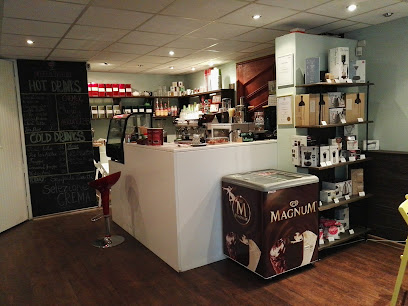
Uncle Paul Shoes
Explore Uncle Paul Shoes in Tallinn for stylish, high-quality footwear that complements your unique style and enhances your travel experience.

Kirill Safonov Atelier Tallinn
Explore Kirill Safonov Atelier in Tallinn for exclusive clothing and chic accessories, reflecting the essence of modern Estonian fashion.

Creativity Shop
Explore your creativity at the Creativity Shop, Tallinn's premier bead store filled with unique crafting supplies and inspiring workshops.

Lillegalerii Ema ja Tütar
Explore the enchanting world of Lillegalerii Ema ja Tütar, a charming florist in Tallinn, offering exquisite floral arrangements and warm hospitality.

Modest Estonia
Explore Modest Estonia, a boutique clothing store in Tallinn offering unique Estonian fashion for discerning travelers seeking style and quality.
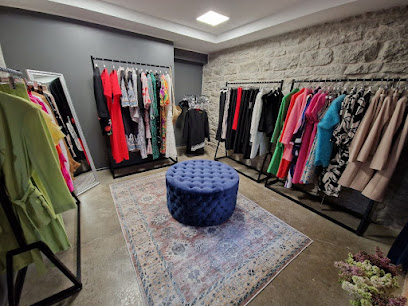
Moonflower Ibiza
Explore Moonflower Ibiza in Tallinn for a unique shopping journey filled with vibrant culture and eclectic treasures inspired by the Balearic island.
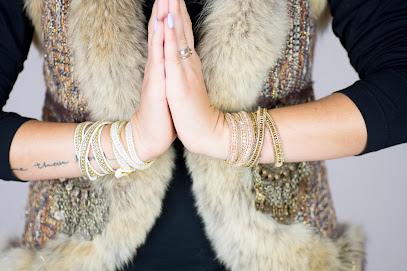
Essential bars & hidden hideouts
Vana Villem Pub
Discover the vibrant atmosphere and traditional flavors of Estonia at Vana Villem Pub in Tallinn, a must-visit for every traveler.

Irish Pub Mad Murphy's
Discover the lively spirit of Ireland at Mad Murphy's, Tallinn's premier Irish pub, featuring authentic cuisine and vibrant entertainment.

Sigmund Freud Bar
Discover the unique cocktail experience at Sigmund Freud Bar in Tallinn, where innovative drinks meet a cozy, artistic atmosphere.
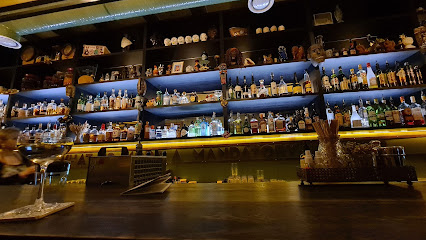
Depeche Mode Baar
Explore the vibrant Depeche Mode Baar in Tallinn, where music lovers unite for drinks and nostalgia in a unique atmosphere.

Valli Bar
Discover Valli Bar: A vibrant nightlife gem in Tallinn, offering an eclectic drink menu and lively atmosphere for every visitor to enjoy.

Mr. Mauruse Pub
Discover Mr. Mauruse Pub in Tallinn: an affordable gem for drinks, local flavors, and a lively atmosphere in the heart of the city.

Bogi
Discover Bogi, Tallinn's premier cocktail bar, where exquisite drinks, sushi, and a vibrant atmosphere come together for an unforgettable experience.

Ufo Pubi
Experience the vibrant nightlife of Tallinn at Ufo Pubi, a cozy bar offering a variety of drinks at affordable prices, perfect for socializing.

Ruddy Baar
Discover Ruddy Baar, a vibrant cocktail bar in Tallinn's Kesklinn, perfect for socializing and enjoying expertly crafted drinks.

Funky Bar
Discover Funky Bar in Tallinn, a lively destination for unique drinks, vibrant music, and unforgettable nightlife experiences.

Local Phrases
-
- HelloTere
[teh-reh] - GoodbyeNägemist
[nah-geh-mist] - YesJah
[yah] - NoEi
[ay] - Please/You're welcomePalun
[pah-loon] - Thank youAitäh
[eye-taah] - Excuse me/SorryVabandage
[vah-bahn-dah-geh] - How are you?Kuidas sul läheb?
[kwee-dahs sool lay-heb] - Fine. And you?Hästi. Ja sina?
[hah-stee. yah see-na] - Do you speak English?Kas sa räägid inglise keelt?
[kahs sah rah-ah-geed eeng-lee-seh kehlt] - I don't understandMa ei saa aru
[mah ay sah ah-roo]
- HelloTere
-
- I'd like to see the menu, pleaseMa tahaksin menüüd näha, palun
[mah tah-hahk-seen meh-noo-ood nah-hah, pah-loon] - I don't eat meatMa ei söö liha
[mah ay soo lee-hah] - Cheers!Terviseks!
[tehr-vee-sehks] - I would like to pay, pleaseMa sooviksin maksta, palun
[mah soh-veek-seen mahk-stah, pah-loon]
- I'd like to see the menu, pleaseMa tahaksin menüüd näha, palun
-
- Help!Appi!
[ah-pee] - Go away!Mine minema!
[mee-neh mee-neh-mah] - Call the Police!Kutsu politsei!
[koot-soo poh-lee-tseh-ee] - Call a doctor!Kutsu arst!
[koot-soo ah-rst] - I'm lostMa olen eksinud
[mah oh-lehn ehk-see-nood] - I'm illMa olen haige
[mah oh-lehn hah-ee-geh]
- Help!Appi!
-
- I'd like to buy...Ma tahaksin osta...
[mah tah-hahk-seen ohs-tah] - I'm just lookingMa lihtsalt vaatan
[mah leekhstahlt vah-tahn] - How much is it?Kui palju see maksab?
[kwee pahl-yoo seh mahk-sahb] - That's too expensiveSee on liiga kallis
[seh ohn leeh-gah kah-lees] - Can you lower the price?Kas sa saaksid hinda alandada?
[kahs sah sah-kseed heen-dah ahl-ahn-dah-dah]
- I'd like to buy...Ma tahaksin osta...
-
- What time is it?Mis kell on?
[mees kell ohn] - It's one o'clockOn üks
[ohn uks] - Half past (10)Pool (10)
[pohl (10)] - MorningHommik
[hohm-meek] - AfternoonPärastlõuna
[pah-rahst-loo-nah] - EveningÕhtu
[ohkh-too] - YesterdayEile
[ay-leh] - TodayTäna
[tah-nah] - TomorrowHomme
[hohm-meh] - 1Üks
[uks] - 2Kaks
[kahks] - 3Kolm
[kolm] - 4Neli
[neh-lee] - 5Viis
[vees] - 6Kuus
[koos] - 7Seitse
[seyt-seh] - 8Kaheksa
[kah-heksah] - 9Üheksa
[u-heksah] - 10Kümme
[koom-meh]
- What time is it?Mis kell on?
-
- Where's a/the...?Kus on ...?
[koos ohn] - What's the address?Mis on aadress?
[mees ohn ahah-drehss] - Can you show me (on the map)?Kas sa saaksid mulle näidata (kaardil)?
[kahs sah sah-kseed mool-leh nah-ee-tah-dah kaar-deel] - When's the next (bus)?Millal on järgmine (buss)?
[meel-lahl ohn yairg-mee-neh booss] - A ticket (to ....)Pilet ( ... )
[pee-leht]
- Where's a/the...?Kus on ...?
History of Kadriorg
-
Kadriorg was founded in 1718 by Tsar Peter the Great of Russia, who commissioned the construction of a summer palace for his wife, Catherine I. This marked the beginning of Kadriorg as a significant cultural and architectural site in Tallinn. The palace, designed by Italian architect Niccolo Michetti, is a prime example of Baroque architecture and remains a central feature of the neighborhood.
-
The gardens surrounding Kadriorg Palace were designed in the French formal style and expanded in the 18th century. The park features a variety of sculptures, ponds, and pathways, reflecting the grandeur of the era. In the 19th century, the park was further developed, adding to its status as a recreational area for the city's elite and a symbol of Russian imperial ambition.
-
In the 20th century, Kadriorg evolved into a cultural hub, housing several important institutions. The Kadriorg Art Museum, established in 1921, displays a collection of foreign art, including works from the 16th to the 20th centuries. Additionally, the Mikkel Museum, located in a historic villa, showcases an impressive collection of decorative arts and applied arts.
-
During World War II, Kadriorg suffered significant damage, as Tallinn was occupied by both Soviet and Nazi forces. The war disrupted the cultural life of the neighborhood, but post-war reconstruction efforts were undertaken to restore the palace and park. The restoration of Kadriorg Palace was completed in 1960, allowing it to reopen to the public.
-
Today, Kadriorg is a vibrant neighborhood known for its beautiful architecture, lush parks, and cultural institutions. The area attracts both locals and tourists, offering a glimpse into Tallinn's royal past while serving as a peaceful retreat from the bustling city. The neighborhood also hosts various events and festivals, celebrating its rich history and cultural heritage.
Kadriorg Essentials
-
Kadriorg is conveniently accessible from various parts of Tallinn. From the city center, you can take tram number 1 or 2, which will take you directly to Kadriorg within 10-15 minutes. Alternatively, buses 34A and 23 also serve the area, providing easy connections. If you are arriving from the Lennart Meri Tallinn Airport, a taxi or rideshare service will take approximately 15 minutes to reach Kadriorg.
-
Kadriorg is a walkable neighborhood, with many attractions located within a short distance of each other. Public transport options include trams and buses, which are frequent and reliable. For a more leisurely exploration, consider renting a bicycle from one of the local bike-sharing services. There are designated bike paths throughout the area, making cycling a pleasant option.
-
Kadriorg is generally a safe neighborhood for tourists. However, standard safety precautions should be taken, such as not leaving personal belongings unattended and being cautious in crowded areas. While there are no specific high-crime areas targeting tourists, it is advisable to avoid poorly lit streets at night and remain vigilant.
-
In case of an emergency, dial 112 for immediate assistance. This number connects you to police, fire, and medical services. Local hospitals are equipped to handle emergencies, and it is advisable to have travel insurance covering medical costs. For minor health issues, pharmacies are available throughout Kadriorg for over-the-counter medications.
-
Fashion: Do dress appropriately when visiting cultural sites, especially the Kadriorg Palace. Avoid overly casual attire. Religion: Do respect local traditions, particularly at the Orthodox Church. Always be quiet and respectful. Public Transport: Do validate your ticket upon boarding. Don't talk loudly or play music on public transport. Greetings: Do greet locals with a friendly 'Tere' (Hello). Don't ignore personal space. Eating & Drinking: Do try local Estonian dishes at cafes. Don't eat while walking in public areas, as it is generally frowned upon.
-
To experience Kadriorg like a local, visit the Kadriorg Park early in the morning for a peaceful stroll among the gardens and ponds. Check out the local art galleries and exhibitions at the Kumu Art Museum. Engage with locals at the nearby cafes, where you can enjoy traditional pastries like 'Kohupiimapasteet' (cottage cheese pastries). Attend local events or festivals, which are often held in the park to immerse yourself in Estonian culture.
Nearby Cities to Kadriorg
-
Things To Do in Rapla
-
Things To Do in Paide
-
Things To Do in Helsinki
-
Things To Do in Espoo
-
Things To Do in Rakvere
-
Things To Do in Haapsalu
-
Things To Do in Porvoo
-
Things To Do in Pärnu
-
Things To Do in Kärdla
-
Things To Do in Viljandi
-
Things To Do in Jõhvi
-
Things To Do in Tartu
-
Things To Do in Lahti
-
Things To Do in Turku
-
Things To Do in Kuressaare











